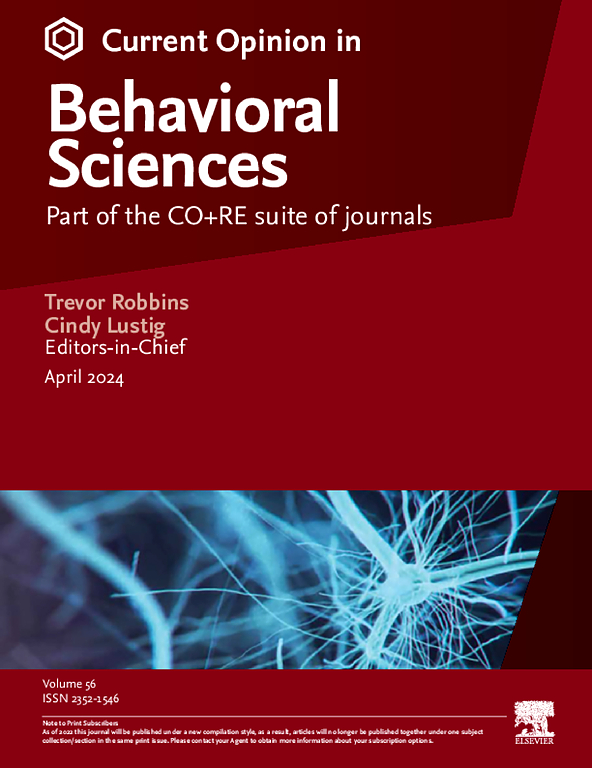硬骨鱼短距离导航的行为策略和神经机制
IF 3.5
2区 心理学
Q1 BEHAVIORAL SCIENCES
引用次数: 0
摘要
对硬骨鱼空间认知的研究揭示了一系列显著的行为策略和神经机制。虽然有令人信服的证据表明硬骨鱼的短程导航与前脑的吻侧端脑有关,但对调节这种行为的端脑区域知之甚少。在细胞水平上,已经在端脑的特定区域确定了几种神经元类型,这些区域对给定空间内鱼类个体位置的不同方面做出反应。为了全面了解鱼类的空间表征,我们必须将行为和神经生理学的研究结合起来。在此,我们回顾了硬骨鱼在近距离导航中使用的行为策略,并讨论了大脑如何编码近距离导航策略的现有证据。本文章由计算机程序翻译,如有差异,请以英文原文为准。
Behavioral strategies and neural mechanisms underlying short-range navigation in teleost fish
Studies of spatial cognition in teleosts have uncovered a remarkable array of behavioral strategies and neural mechanisms. While there is compelling evidence that short-range navigation in teleost fish is connected to the telencephalon, the rostral part of the forebrain, little is known about the telencephalic regions mediating this behavior. On the cellular level, several neuron types have been identified in specific regions of the telencephalon that respond to different aspects of the fish’s individual position within a given space. To comprehensively understand spatial representation in fish, we must bridge behavioral and neurophysiological studies. Here, we review the behavioral strategies used by teleost fish to navigate in the short range, and we discuss the current evidence for how the brain encodes short-range navigational strategies.
求助全文
通过发布文献求助,成功后即可免费获取论文全文。
去求助
来源期刊

Current Opinion in Behavioral Sciences
Neuroscience-Cognitive Neuroscience
CiteScore
10.90
自引率
2.00%
发文量
135
期刊介绍:
Current Opinion in Behavioral Sciences is a systematic, integrative review journal that provides a unique and educational platform for updates on the expanding volume of information published in the field of behavioral sciences.
 求助内容:
求助内容: 应助结果提醒方式:
应助结果提醒方式:


